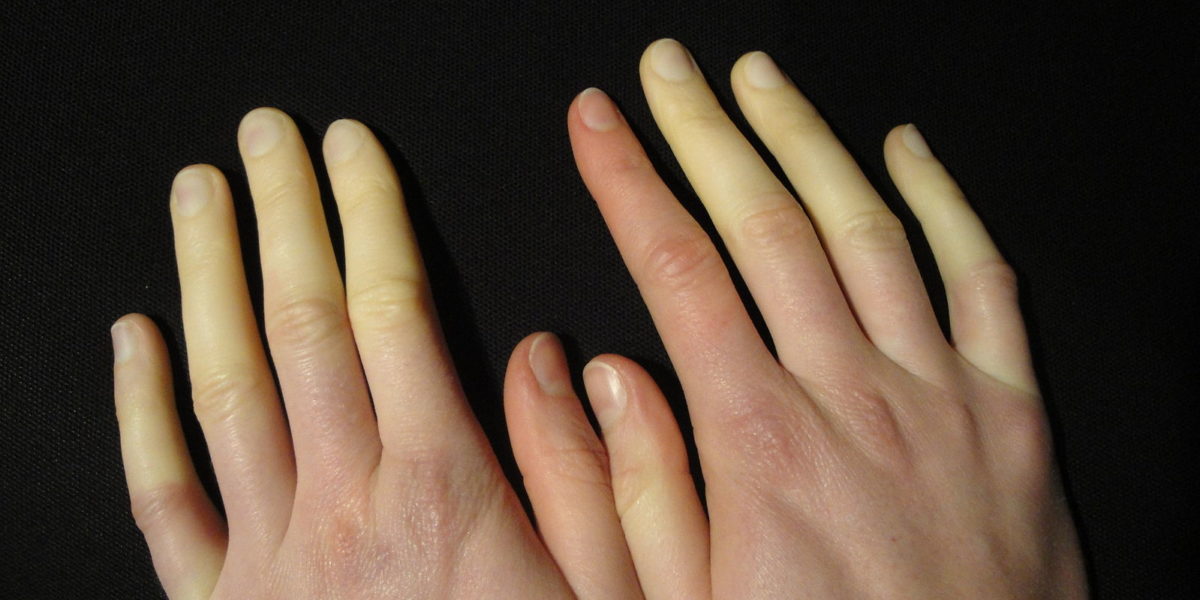Anyone who is familiar with winters that are mainly at temperatures in single digit range knows how crucial gloves are to surviving the tough, frigid weather. If one was to go outside without them, their hands become extremely pale (or sometimes almost blue) and, once back inside, take a bit of time to get back to normal. It’s a tough life, I know, but people with a scleroderma have an even harder time surviving the winter. What is scleroderma, you ask? Scleroderma is an autoimmune disease that causes skin and internal organs to thicken, and if that wasn’t tough enough, a good chunk of people with it also experience secondary Raynaud’s phenomenon, which is an exaggerated vasoconstriction of arterioles in response to cold weather and causes a drop in blood flow. The main, visible outcome from this disease is how the skin whitens and swells. Problems must ensue from the combination of thick skin and lack of blood flow to the extremities, right?
Continue reading “Scleroderma and Raynaud’s Phenomenon: Cold Weather’s Influence on Skin”Author: Elizabeth Prevoznik
arthritis balance bio-inspired design bone brain cartilage climbing extreme conditions feet flying animals growth and development hands healing heart and the cardiovascular system humans impact insects joints jumping land animals lungs and the respiratory system marine animals material science medicine muscle other injury other sports pain plants predation prevention prosthetics recovery and rehabilitation robots running skin spine and back sports injury strength training surgery swimming technology tendons and ligaments treatment walking
